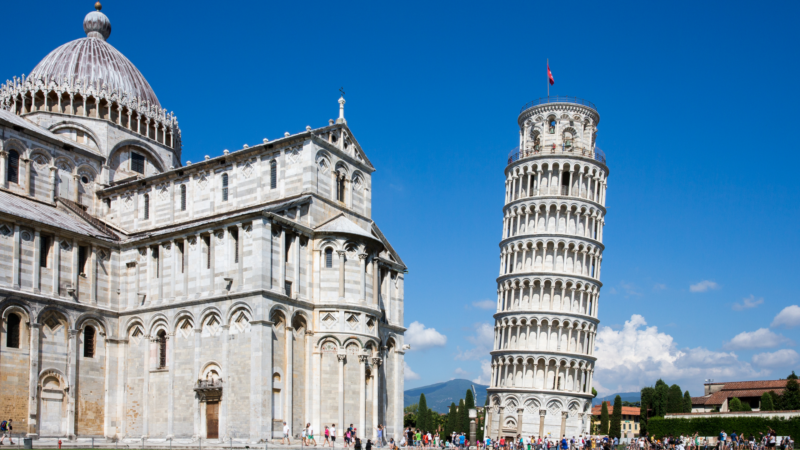More than 5 million people visit the The Leaning Tower of Pisa each year. Some to climb it, many to capture hilarious photos outside, but few of them realize that this famous landmark was actually the result of a human mistake.
One miscalculation made in the 11th century left us with an amazing 14,500 ton leaning tower!

A terrible mistake
The construction of the bell tower began in 1173. It was the last part of the Campo dei Miracoli to be built, after the cathedral and baptistery. Construction went well for the first five years, but when the builders completed the second floor in 1178, they realized that a terrible mistake had been made.
The ground under the tower was soft and marshy, not strong enough to hold the tower upright. They realized too late that the tower needed stronger foundations to keep it in place. The foundations were only 3m deep, but by then it was too late.

The tower took 200 years to build
Construction on the tower stopped for the next 100 years. The government of Pisa hoped that with time the soil would settle while they were busy fighting their neighbors.
After 100 years, engineer Giovanni di Simone started to add more floors to the tower. He tried to compensate for the original lean by making one side of the upper floors taller than the other. This only caused the tower to lean over even more.
By the 14th century, work had progressed to the 7th floor. The bell tower was added, and seven bells were installed, regardless of any issues the weight might cause. By then, the tower was leaning by 1.6 degrees. Doesn’t sound too bad, right? But the difference between the top and the bottom of the tower was about 4.5m!

According to legend, a 16th century math professor at Pisa University, Galileo Galilei, conducted his famous experiment with gravity from the tower. He dropped two objects of different sizes from the top of the tower and watched over the side as they fell to earth at the same speed.
In 1838 architect Alessandro Della Gherardesca, dug a pathway at the base of the tower to allow people to admire the intricately crafted base. This caused the tower to lean even more, probably due to the digging of its base.
Making the tower lean less
By the late 20th century, the tower was leaning 5.5 degrees. It was necessary to close the tower for 11 years while engineers tried to correct the problem from worsening, on the understanding that they wouldn’t over correct the famous tilt that keeps visitors coming to the small Tuscan town. On December 15, 2001, Italy’s Leaning Tower of Pisa finally reopened after a $27 million intervention to fortify the tower and removing soil from underneath.
If you’re in Tuscany, you should definitely visit Pisa and see its extraordinary tower for yourself. Pisa is just over an hour from Florence by train, making it an easy half-day trip. If you want to climb the tower (294 steps and no elevator), we suggest you buy tickets online before going.


